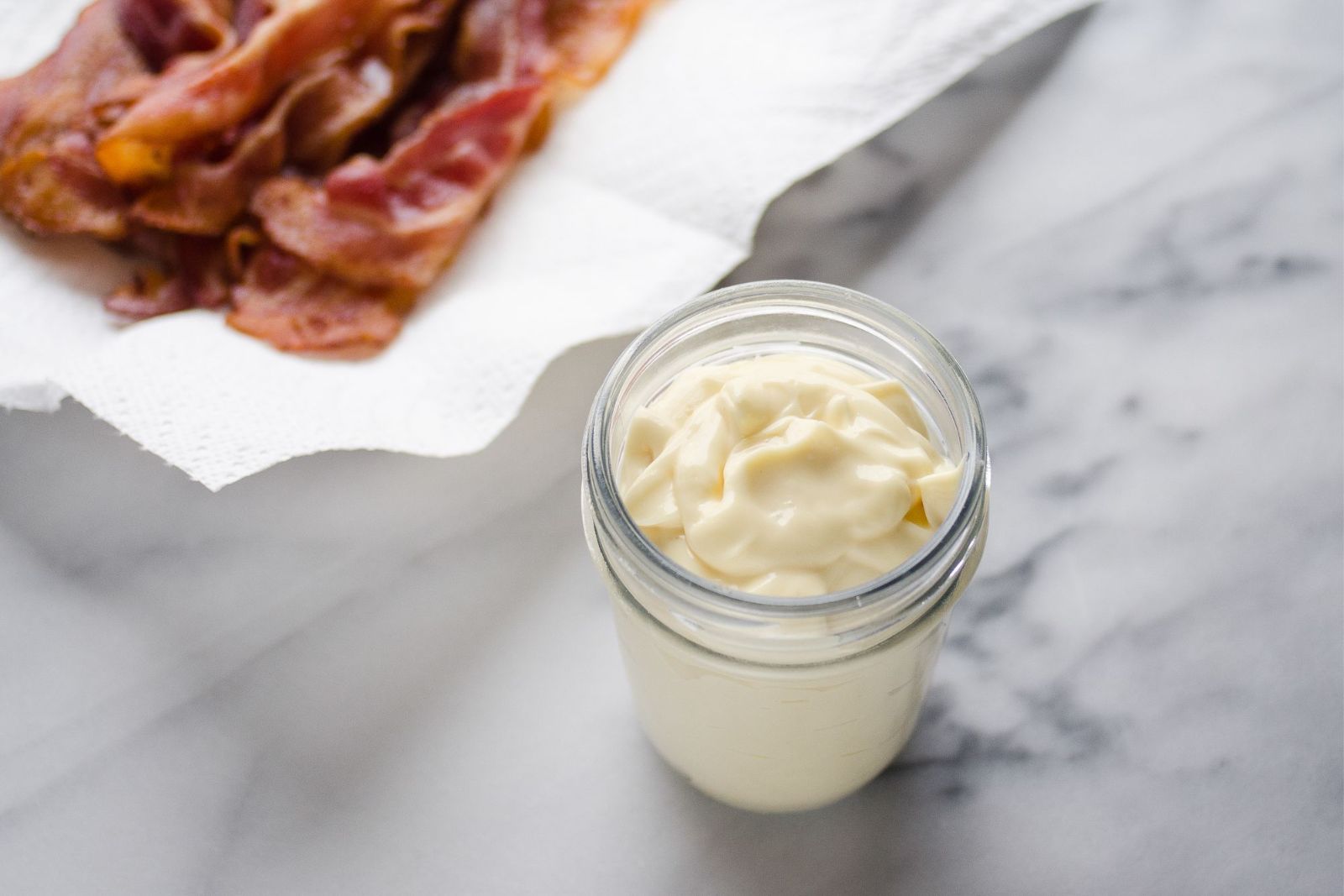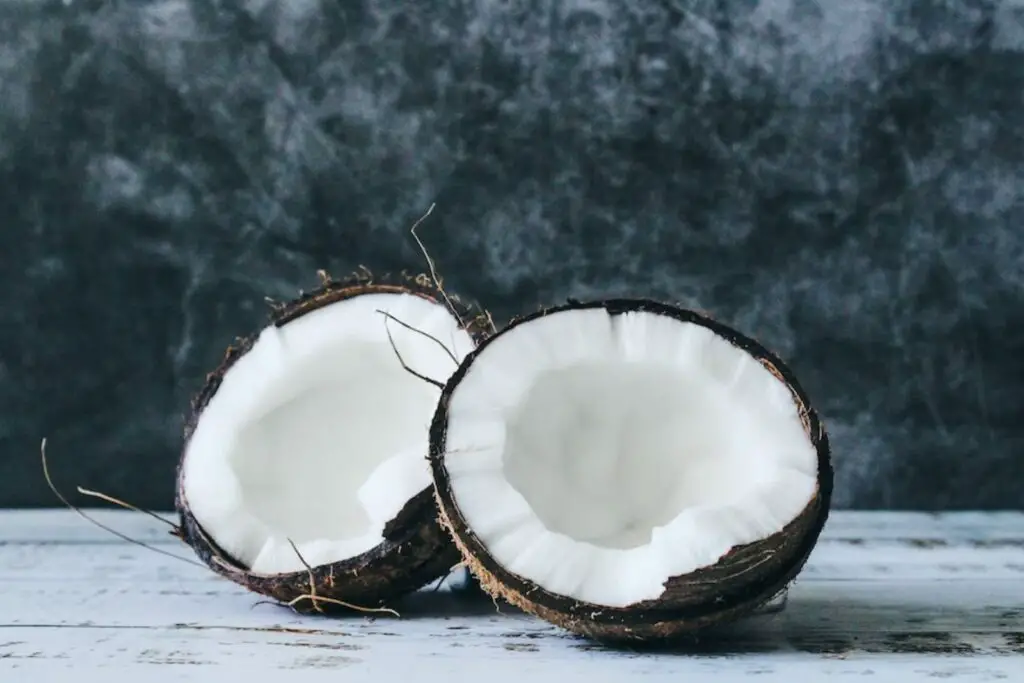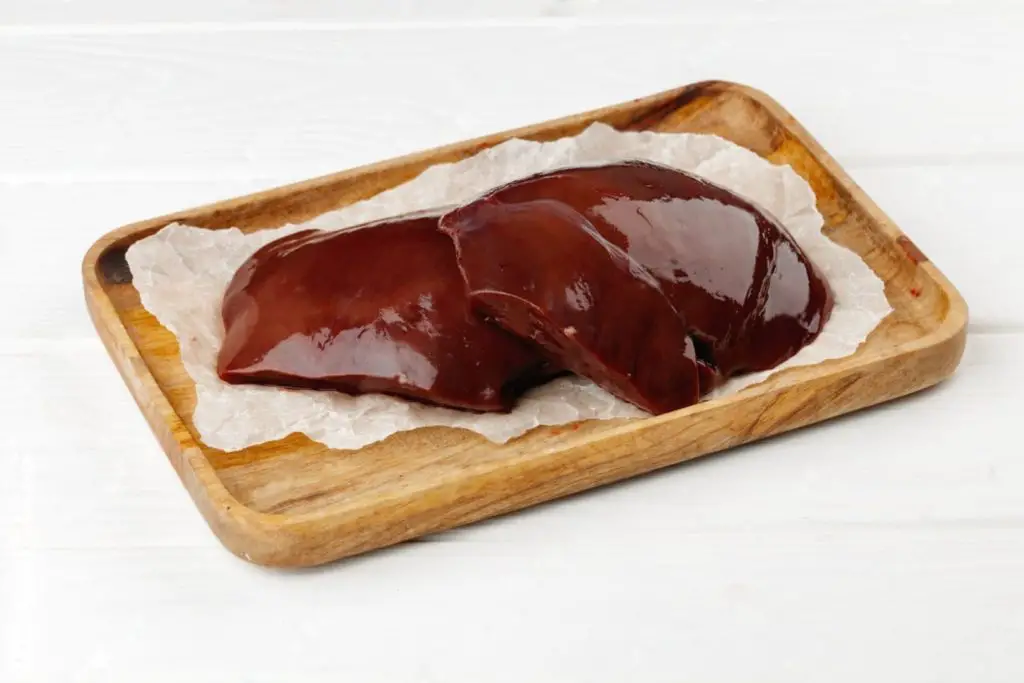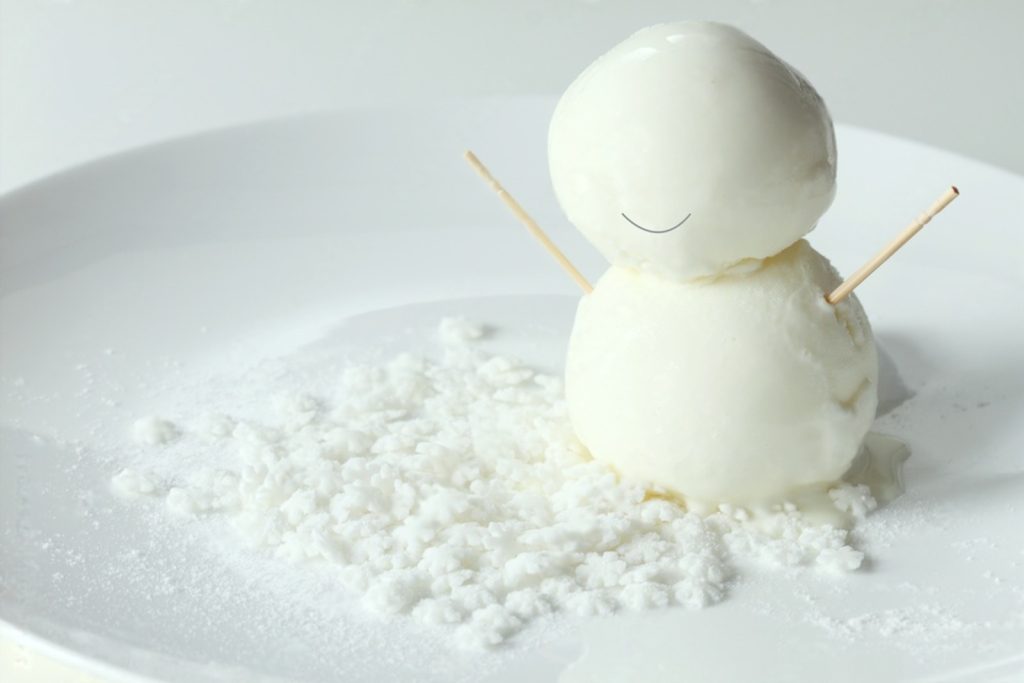
Bacon grease, a flavorful and versatile cooking fat that adds a smoky richness to a wide range of dishes. Bacon grease, the rendered fat leftover from cooking bacon, is treasured by many for its ability to impart a unique depth of flavor to various recipes. Whether used to fry eggs, sauté vegetables, or as a secret ingredient in savory dishes, bacon grease adds a delicious touch that elevates the taste and aroma of your culinary creations. If you find yourself with an excess amount of bacon grease or want to extend its shelf life, freezing it is an excellent option. In this guide, we’ll explore the process of freezing bacon grease, sharing valuable tips and techniques to preserve its flavor and quality, ensuring that you can harness the smoky goodness of bacon in your cooking whenever you desire, even when fresh bacon is not readily available.
Here are the simple steps to freeze bacon grease:
Step 1: Gather the Necessary Materials
When it comes to freezing bacon grease, it’s important to start off on the right foot by gathering all the necessary materials. This step ensures that you have everything you need within reach, making the process smoother and more efficient. Here’s a detailed explanation of the materials required:
- Heat-resistant Container or Jar: Select a container or jar specifically designed to withstand high temperatures. Since bacon grease is hot when it’s poured into the container, using a heat-resistant one prevents the risk of melting or warping. Look for containers made of glass or metal that can handle the heat without compromising their integrity.
- Airtight Lid: Having an airtight lid for your container is crucial for preserving the freshness and quality of the bacon grease. It prevents air from entering the container, which can lead to oxidation and rancidity over time. An airtight seal also helps prevent the absorption of odors from other items in the freezer.
- Clean and Dry Container: Before using the container, ensure that it is clean and free from any residue or lingering food particles. Leftover food debris can spoil the bacon grease and affect its taste. Wash the container with warm soapy water, rinse thoroughly, and dry it completely to remove any moisture. This cleanliness helps maintain the integrity of the grease and prevents any unwanted flavors or contaminants.
By having a heat-resistant container or jar with an airtight lid and ensuring its cleanliness and dryness, you set yourself up for success in freezing bacon grease. These materials not only keep the grease well-preserved but also make it convenient to use whenever you need it.
Step 2: Cool the Bacon Grease
Once you’ve cooked your bacon to crispy deliciousness, it’s time to let the rendered grease cool down before freezing it. This step is important to ensure the grease reaches the ideal temperature for safe handling and successful freezing. Here’s a detailed explanation of cooling the bacon grease:
- Allowing Slight Cooling: After cooking the bacon, remove it from the heat source and let the pan or container of grease sit for a few minutes. This slight cooling period helps reduce the temperature from the hot cooking temperature to a more manageable level. It’s important to note that you don’t want the grease to solidify completely, but rather reach a state where it is still in a liquid form.
- Ideal Temperature for Freezing: The ideal temperature to freeze bacon grease is when it has cooled enough to be safe to handle but is still in a liquid state. This temperature ensures that the grease can be easily poured into the container without solidifying too quickly. A slightly warm liquid consistency makes it easier to work with during the straining and transferring processes.
- Stirring Occasionally: During the cooling period, it’s beneficial to stir the bacon grease occasionally. Stirring helps maintain a uniform consistency and prevents any separation or settling of solid particles that might be present in the grease. This ensures that the bacon grease freezes evenly and maintains its quality throughout the freezing process.
By allowing the bacon grease to cool to a safe handling temperature while remaining in a liquid state and stirring it occasionally, you ensure that the grease is in an optimal condition for the subsequent steps of straining and transferring it to the storage container. This attention to detail will help you achieve the best results when freezing bacon grease.
Step 3: Strain the Bacon Grease
After cooling the bacon grease to a safe handling temperature, the next step is to strain it before freezing. This crucial step ensures that any impurities or leftover bacon bits are removed, resulting in a smoother and cleaner grease. Here are the steps of straining process:
- Prepare a Straining Device: To strain the bacon grease, you’ll need a fine-mesh sieve or a coffee filter. These tools effectively capture small particles while allowing the liquid grease to pass through. Choose a sieve or filter that is appropriate for the amount of grease you’re straining, ensuring it fits securely over a clean container.
- Line the Straining Device: If you’re using a sieve, place it over the container you’ll be transferring the strained grease into. If you’re using a coffee filter, open it up and place it securely in a funnel or any suitable device that can hold it in place over the container. The aim is to create a barrier that will capture any solids while allowing the liquid grease to pass through.
- Pour the Bacon Grease:Carefully pour the cooled bacon grease into the lined straining device. The fine-mesh sieve or coffee filter will catch any leftover bacon bits, charred particles, or other impurities present in the grease. It’s important to pour slowly to avoid any spills or splattering.
- Allow Complete Straining: Let the bacon grease strain completely, allowing enough time for all the liquid to pass through the sieve or filter. Patience is key here, as it ensures that the resulting grease is smooth and free from any unwanted solids.
- Collect the Strained Grease: Once the straining process is complete, you’ll have a container filled with strained bacon grease. The collected grease will be free from impurities, resulting in a smoother texture and improved quality. This strained grease is now ready to be transferred to the storage container for freezing.
By straining the bacon grease, you remove any impurities or leftover bacon bits, resulting in a cleaner and smoother grease. This not only enhances the taste and appearance of your dishes but also makes the grease easier to work with when using it for future cooking endeavors.
Step 4: Transfer the Grease to the Container
After straining the bacon grease to remove impurities, the next step is to transfer it to a designated heat-resistant container for freezing. This step ensures proper storage and preservation of the grease. Here’s a detailed explanation of how to transfer the grease to the container:
- Select a Heat-Resistant Container: Choose a container specifically designed to withstand high temperatures. Opt for materials like glass or metal, which can handle the hot grease without melting or warping. It’s important to use a heat-resistant container to ensure the safety and integrity of the grease during the freezing process.
- Pour the Strained Grease: Carefully pour the strained bacon grease from the collection container into the designated heat-resistant container. Use a funnel if needed to avoid any spills or drips. Take your time and pour slowly to prevent any splattering.
- Leave Headspace: Leave some headspace at the top of the container to allow for expansion during freezing. As the grease freezes, it may expand slightly, and leaving enough room ensures that the container won’t crack or break. A general rule of thumb is to leave about half an inch of headspace, but this may vary depending on the size and shape of the container.
- Seal the Container Tightly: After pouring the grease and leaving the appropriate headspace, seal the container tightly. Ensure that the lid is secured properly to prevent any air or moisture from entering. This airtight seal is crucial for maintaining the quality and freshness of the bacon grease during freezing. It helps prevent freezer burn and the absorption of unwanted odors.
By transferring the strained bacon grease into a heat-resistant container, leaving enough headspace, and sealing it tightly, you ensure that the grease is stored safely and securely for freezing. Following these steps will help preserve the quality and flavor of the grease for an extended period.
Step 5: Label and Date
After transferring the strained bacon grease into a container for freezing, it’s important to label and date the container. This simple step helps you keep track of the storage time and ensures that you use the bacon grease within a reasonable period. Here’s a detailed explanation of labeling and dating the container:
- Clear Indication of Contents: On the container, clearly indicate that it contains bacon grease. This prevents any confusion in the future, especially if you have multiple containers in the freezer. A simple label or sticker stating “Bacon Grease” will suffice.
- Date of Freezing: In addition to indicating the contents, write the date of freezing on the container. Use a permanent marker or a label that won’t smudge or fade over time. This date serves as a reference point for determining the storage time of the bacon grease.
- Keep Track of Storage Time: By labeling and dating the container, you can easily track the storage time of the bacon grease. It’s recommended to use the frozen bacon grease within six months for optimal quality and flavor. Having the date clearly marked allows you to monitor how long the grease has been stored and ensure that you use it within a reasonable period.
- Additional Information (Optional): If desired, you can add any additional information to the label, such as the amount of grease or any specific details about the batch. This information can be helpful if you have different batches or if you’re using the grease for specific recipes.
By labeling and dating the container, you create a system that helps you keep track of the bacon grease’s storage time and ensures that you use it before it exceeds the recommended storage period. This simple practice promotes organization and efficiency in your culinary endeavors.
Step 6: Freeze and Store
After properly labeling and dating the container of bacon grease, it’s time to freeze and store it. This step ensures the long-term preservation of the grease, maintaining its quality and flavor for future use. Here’s a detailed explanation of freezing and storing bacon grease:
- Sealed Container: Ensure that the container of bacon grease is tightly sealed to prevent any air or moisture from entering. This airtight seal is crucial for maintaining the quality of the grease during freezing and storage.
- Placement in the Freezer: Place the sealed container of bacon grease in the freezer. Choose a spot in the freezer that maintains a consistent temperature. Avoid placing it near the freezer door or in areas that are frequently exposed to temperature fluctuations. A consistent temperature helps maintain the integrity of the grease and prevents any potential spoilage.
- Freezing Shelf Life: Bacon grease, when stored properly in the freezer, can remain usable for up to six months. This duration may vary slightly depending on factors such as the quality of the grease and the freezer’s temperature stability. Regularly check the labeled date to ensure you use the bacon grease within the recommended timeframe for the best flavor and quality.
- Oxidation Prevention: The low temperature of the freezer slows down the oxidation process in bacon grease. Oxidation can lead to rancidity and a decline in flavor. Freezing the grease helps preserve its freshness and prevents undesirable changes in taste and quality.
By placing the sealed container of bacon grease in the freezer and ensuring it is stored properly, you extend its shelf life and maintain its quality for up to six months. The controlled temperature of the freezer helps slow down oxidation, ensuring that the bacon grease remains fresh and flavorful when you’re ready to use it.
Step 7: Thaw the Frozen Bacon Grease
When you’re ready to use the frozen bacon grease, it’s important to thaw it properly before incorporating it into your recipes. Thawing in the refrigerator ensures a gradual temperature change and minimizes the risk of bacterial growth. Here’s a detailed explanation of thawing and using frozen bacon grease:
- Remove from the Freezer: Take the sealed container of frozen bacon grease out of the freezer. Carefully handle the container to prevent any spills or leaks.
- Thawing in the Refrigerator: Place the container in the refrigerator for thawing. Thawing in the fridge is the safest method as it allows for a gradual change in temperature, reducing the risk of bacterial growth. The grease will slowly thaw over time, transitioning from a solid state to a pourable consistency.
- Patience is Key: Thawing frozen bacon grease in the refrigerator requires patience, as it may take several hours or overnight to reach the desired consistency. Avoid rushing the process by using methods like microwave thawing or placing the container at room temperature, as these can lead to uneven thawing and potential food safety risks.
- Check for Pourable Consistency: Once the bacon grease has thawed in the refrigerator, check its consistency. It should be pourable, similar to its original liquid state before freezing. If the grease is still partially frozen or has clumps, allow it to continue thawing in the refrigerator until it reaches the desired pourable consistency.
- Using Thawed Bacon Grease: Once the bacon grease has thawed and reached a pourable consistency, it is ready to be used in cooking. Use it as a flavorful cooking fat or as a savory addition to various dishes. The thawed bacon grease adds a smoky and savory touch, enhancing the taste and aroma of your culinary creations.
By thawing the frozen bacon grease in the refrigerator, you ensure a safe and gradual temperature change while minimizing the risk of bacterial growth. Patience is important during the thawing process, allowing the grease to reach a pourable consistency before using it in your cooking. Enjoy the rich flavor and aroma that the thawed bacon grease brings to your dishes.
Other related questions
Can you refreeze bacon grease?
No, it is not recommended to refreeze bacon grease once it has been thawed. Refreezing can affect the quality and flavor of the grease, leading to potential spoilage and degradation. It is best to use thawed bacon grease promptly or store it in the refrigerator for a short period before discarding any remaining portions.
How do I know if the bacon grease has gone bad after being frozen?
To determine if frozen bacon grease has gone bad, examine its appearance, smell, and taste. If the grease has developed an off color, has a rancid or foul odor, or tastes unpleasant, it is likely spoiled and should be discarded. Additionally, the presence of mold, unusual texture, or signs of contamination should be taken as indicators of spoilage.
Does freezing bacon grease affect its flavor?
Freezing bacon grease can slightly affect its flavor over time. While freezing helps preserve the overall taste, there may be a subtle loss in the original fresh aroma and flavor profile. However, when stored properly and used within the recommended time frame, the impact on flavor is minimal, and the frozen bacon grease can still provide a smoky and savory touch to dishes.
Can I freeze bacon grease drippings from cooked bacon?
Yes, it is possible to freeze bacon grease drippings from cooked bacon. After cooking bacon, allow the drippings to cool and solidify before transferring them to a freezer-safe container. Ensure that the container is properly sealed to prevent freezer burn or absorption of unwanted odors. Frozen bacon grease drippings can be stored for up to six months and used for cooking or flavoring various dishes.
Is it safe to mix different types of bacon grease before freezing?
It is generally safe to mix different types of bacon grease before freezing, as long as they are properly strained and free from any contaminants. Combining different types of bacon grease can result in a unique flavor profile that enhances culinary creations. However, it is important to note that the flavors and characteristics of the different types of bacon grease may blend together, potentially altering the overall taste.
Can frozen bacon grease be used as a substitute for butter or oil in recipes?
Yes, frozen bacon grease can be used as a substitute for butter or oil in recipes. When using bacon grease as a substitute, keep in mind that it has a distinct smoky flavor that may impact the taste of the dish. Adjust the amount of bacon grease used based on personal preference and the desired level of smokiness.








